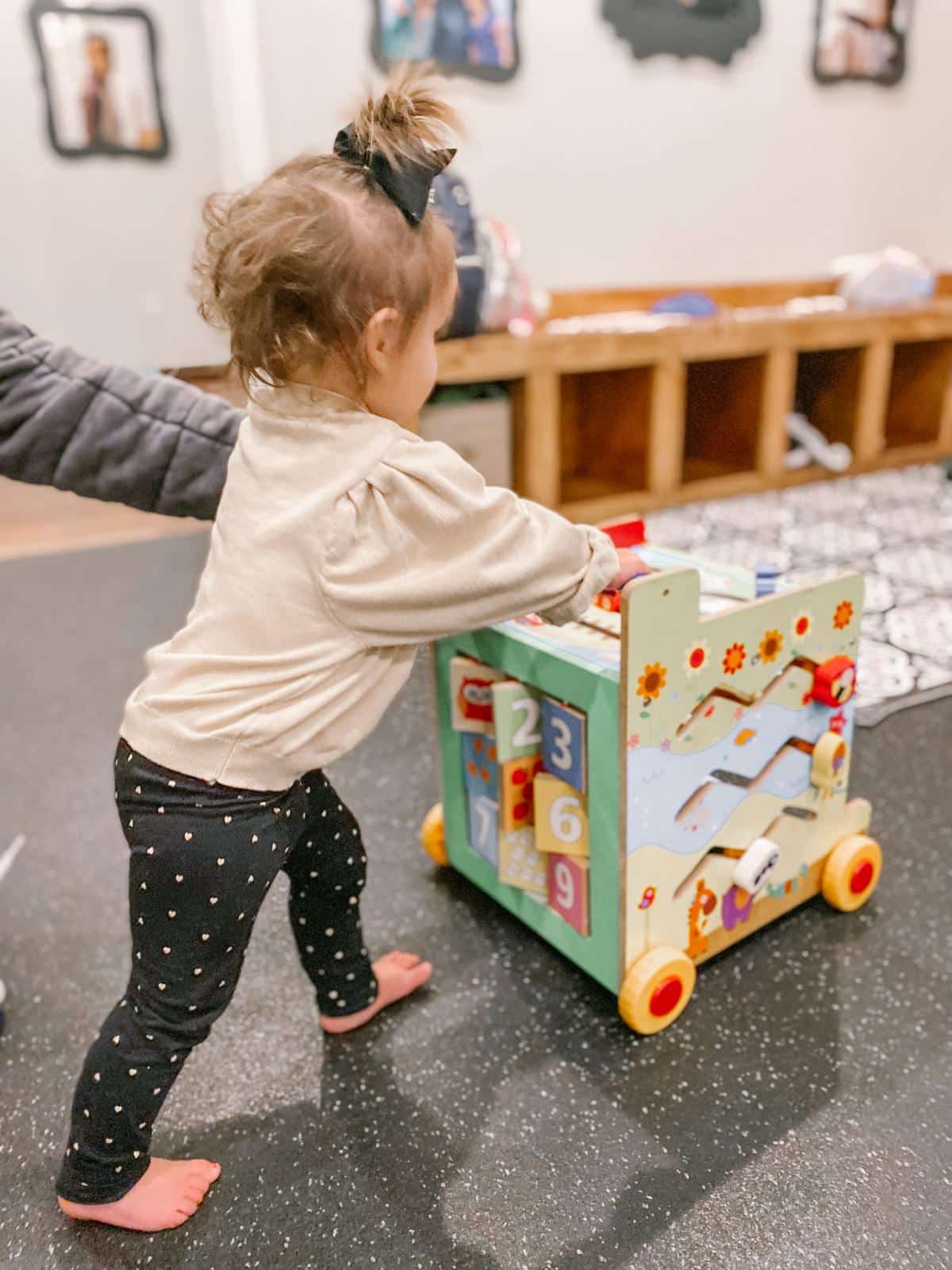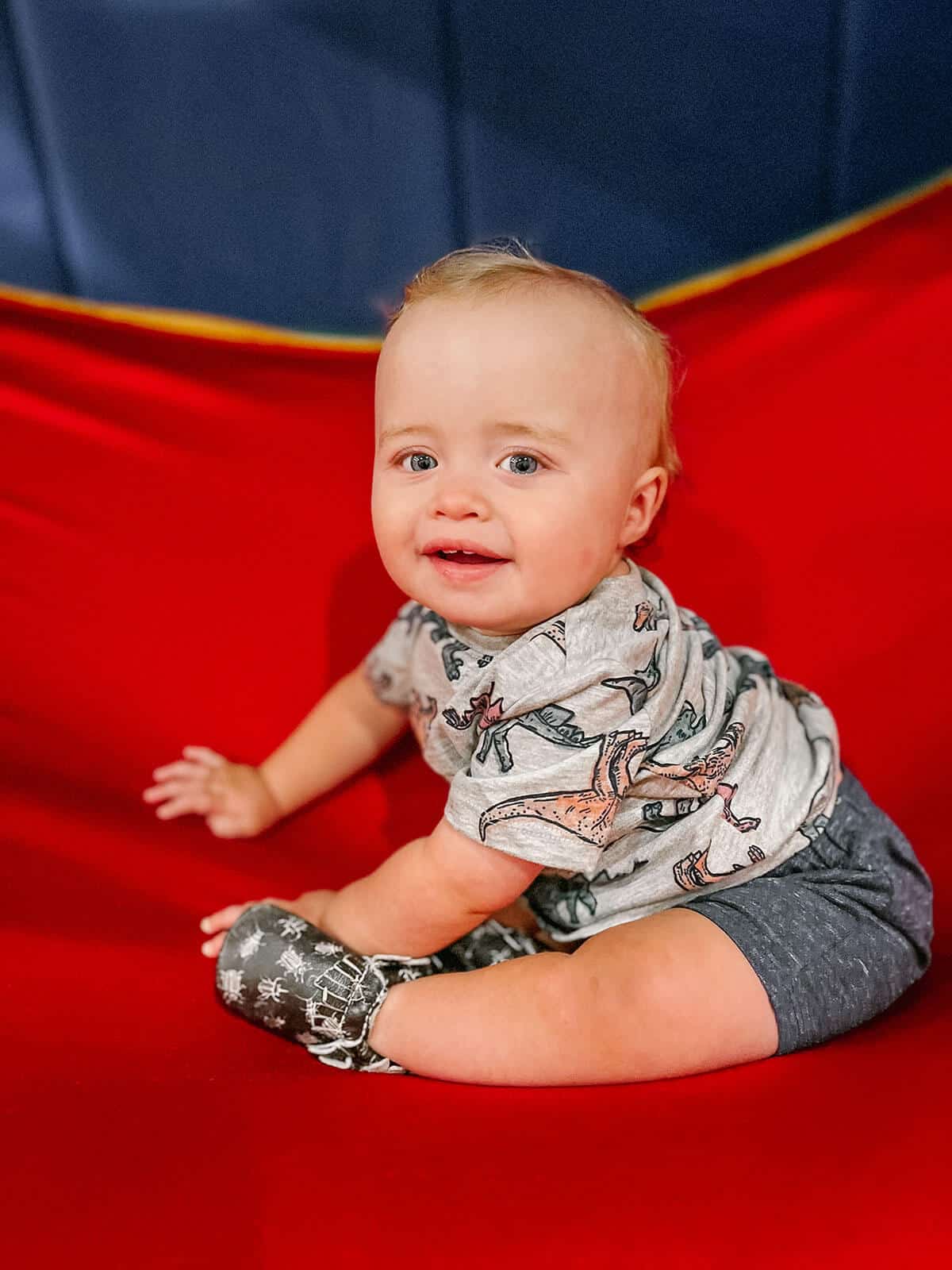Pediatric Physical Therapy in Bentonville, AR
Pediatric physical therapy helps a child develop strength and control of the larger muscles, fundamental for activities like walking, running, jumping, and balancing. In our welcoming and fun environment, No Limits staff help children not only build physical resilience but also gain confidence and coordination. Our physical therapy sessions provide invaluable support for children to thrive and reach their full potential.
Who Benefits from Pediatric Physical Therapy?
Pediatric physical therapy offers important support to any child that may have challenges in developing abilities such as sitting, standing, walking or running. Our physical therapists enjoy helping children gain a sense of comfort and ease as they navigate family and school environments. As children progress through physical therapy, not only do their physical abilities flourish, but their confidence also experiences a remarkable boost, empowering them to engage more fully in their surroundings.
A parent may notice signs like the following that indicate their child could benefit from physical therapy:
- A baby is slow to roll over, hold their head up, or support themselves sitting
- A toddler continues to walk on their toes after 15 months of age
- A small child seems clumsy, falling or tripping often
- An older child can’t keep up other other children when playing games
- A child of any age consistently manifests poor posture

These signs can alert a parent to the improvements available from pediatric physical therapy. Of course, children also benefit from physical therapy after an injury or surgery, to return to their former strength and ability.
Pediatric Physical Therapy Soon After Birth
Physical therapy is a powerful ally for premature babies, providing a holistic approach to enhance muscle tone and alleviate joint concerns. In the early weeks, some babies may display signs of torticollis, a muscular disorder affecting head movement. Swift engagement in physical therapy not only addresses these challenges but empowers children to overcome them, ensuring their future development aligns seamlessly with their unique strengths and abilities.

Milestones of Expected Physical Development
Pediatricians use established physical milestones to monitor each child’s development and determine if physical therapy would be useful. Here are some of the developmental signs they watch for:
Two months
- Holds head up when placed on tummy
- Moves both arms and both legs
Four months
- Holds own head steady
- Brings hands to mouth
- Pushes up onto forearms when on tummy
Six months
- Rolls from tummy to back
Nine months
- Gets self into sitting position
- Sits without support
- Moves objects from one hand to the other
One year
- Pulls self up to standing position
- Cruises furniture
Two years
- Kicks a ball
- Runs unassisted
- Walks up a few stairs
Three years
- Can put on some clothes unassisted
- Jumps with both feet
- Pedals tricycle
Two months
- Holds head up when placed on tummy
- Moves both arms and both legs
Four months
- Holds own head steady
- Brings hands to mouth
- Pushes up onto forearms when on tummy
Six months
- Rolls from tummy to back
Nine months
- Gets self into sitting position
- Sits without support
- Moves objects from one hand to the other
One year
- Pulls self up to standing position
- Cruises furniture
Two years
- Kicks a ball
- Runs unassisted
- Walks up a few stairs
Three years
- Can put on some clothes unassisted
- Jumps with both feet
- Pedals tricycle
Physical Therapy
Frequently Asked Questions
Simply put, the overall goal of pediatric physical therapy is to make everyday physical activities like walking, running, standing, and jumping easier for a child and to help their body function to the very best of its ability.
Pediatric physical therapy can be very helpful for children challenged by brain, spine, or muscle disorders, or kids dealing with an injury or any delay that might be holding them back from their best life. No matter where they are physically when they come to us, our nurturing, supportive process gets them moving forward.
We typically work with the various “big muscle” groups. The overall goals of physical therapy include:
- Building muscle strength, tone, and control
- Improving coordination between both sides of the body
- Improving balance
- Increased flexibility
- Better range of motion
- Gait training to improve walking or the use of adaptive equipment (like a walker)
- Building physical endurance
- Improved posture and body alignment
- Strengthening neuromuscular connections (the muscles and nerves that control their body movements and functions)
We want to help your child enjoy the everyday activities of life on their terms. That can range from being better able to walk on their own to feeling more assured in their movement when they play with their friends.
Physical therapy is designed to strengthen their body so that they can move through their world more confidently.
Of course, that’s the most general assessment; the “top goals” of physical therapy are what we set together for your child. We meet them where they are right now and develop a plan to help them not only grow stronger but thrive!
Simply put, physical therapy helps make someone stronger and able to move their bodies better.
Tell them that a physical therapist helps people of all kinds get stronger and healthier in their bodies. They work with babies, big athletes, and older people like grandparents. They use fun special exercises and tools to make this happen.
Their muscles will get bigger and stronger. They’ll be better able to walk, run, jump, and play. If they’ve been having pain, physical therapy will help make them feel better.
Of course, this is a very general way to explain physical therapy to your child. Because every kiddo is different and has their own unique therapy goals, feel free to reach out to us. We’ve worked with so many children and can offer helpful words and descriptions to suit their situation.
There is no standard timeframe; we work with your child until the goals we’ve set together are achieved.
Some goals can be addressed in a few sessions, others require a longer stretch of physical therapy. In general, therapy can last from several weeks to several years.
Another factor that can impact how long a child does physical therapy is any specific diagnosis from their pediatrician.
As the therapist works with your child, they’ll be closely watching their progress and will communicate every milestone to you. This provides a much better way to gauge how long they’ll benefit from physical therapy.
Kids dealing with muscular dystrophy, cerebral palsy, Down Syndrome, brain injuries, spina bifida, and autism are often challenged by various “motor issues.” These can all be significantly improved through physical therapy.
Other indicators that a child could benefit from PT include
- Challenges with balance and coordination
- Muscle weakness
- Poor posture when walking, sitting, and standing. PT can improve it and strengthen any misalignment with the hips and spine
- Limited mobility while crawling, sitting up, running, walking
- Any delay in motor development (age-appropriate milestones like crawling or walking)
- Unusual movements like a severe lack of coordination when playing, or a constant habit of walking on their toes
Some other indicators that a child could benefit from physical therapy include any issues with skipping, jumping, hopping, catching, or throwing in comparison to their peers. If they tend to trip and fall or bump into things more often than other kids, physical therapy is something worth looking into.
A child who routinely sits in a “W” position (on their bottom with their knees bent back and feet by their hips) will lack core strength and that eventually impacts certain other movements. Physical therapy can improve that.
Of course, if your child has experienced an injury, physical therapy can be very useful in their recovery. It decreases their pain, improves movement, restores flexibility, and gets them back to their normal activities much faster.
If you’ve got questions, put your mind at ease with a free consultation with one of our expert therapists. We’re here to answer all your concerns.
We think it’s important for your child to have a consistent relationship with their therapists. We believe that children should have exposure to a variety of talented therapists that can best help your child achieve their goals. Each client that comes more than one time per week, will be comfortable seeing different staff members. This allows them access to all of our staffs’ talents, and allows their skills to generalize to multiple adults. It also allows staff members to take a vacation, and your child does not have to miss any appointment, as they are familiar with our team and comfortable continuing their plan of care with any therapist!
We do our very best to maintain an ongoing relationship between your child and the same therapists. Of course, there may be times when a last-minute change comes up; but, your child will feel comfortable with all therapists at No Limits and be able to adjust.
The bottom line is, yes. The need for a referral is mostly for insurance purposes.
On that note, most insurance companies will cover physical therapy, but there can be some coverage exceptions. These aren’t always clear, so it’s a good idea to check with your carrier.
We’re in-network with these insurance carriers:
- AETNA
- Arkansas Medicaid
- Arkansas Total Care
- Blue Cross Blue Shield
- CareSource
- Arkids A
- Arkids B
- Cigna
- Empower
- QualChoice
- Summit Community Care
- TEFRA
We work closely with many area pediatricians and are familiar with referrals and the ins and outs required for insurance. Feel free to call us at (479) 250-9838.
Pediatric physical therapy and occupational therapy share the same goals of building a child’s physical strength and mastery of everyday skills. Both therapies are designed to make them more confident and independent in their life. How this is achieved differs in certain ways.
Physical therapy Pediatric physical therapy focuses on strengthening the body to make it function more easily and comfortably. Target goals include building muscle strength, improving coordination, balance, flexibility, and range of motion. We work to give a child more control over their body, and more confidence in everyday things like walking, standing, or running.
Physical therapy can help kids at every stage, all the way up to age 18. It’s useful in helping a baby who struggles to hold their head up or a toddler who appears a little clumsier than expected. Any kid with a little trouble keeping up with their friends in normal physical activities can benefit. We’ll help them build the strength, coordination, and balance to better engage with their world.
Occupational therapy Whereas physical therapy mostly focuses on body movement, occupational therapy works to improve a child’s ability to more easily perform everyday activities. These include things like handling a bottle or utensils, being able to button their coat, or improving hand-eye coordination.
Occupational therapy also helps with the kind of sensory-based challenges kids dealing with autism or ADHD often encounter. It gives them the tools to better focus in class or on their homework and to engage with others more comfortably.
The thing that both occupational therapy and physical therapy share is a desire to give your child much more freedom and confidence in navigating their life.
Pediatric physical therapy is typically covered by most insurance plans. However, there can be “exclusions” which are not always clear, either in your policy documents or on the company’s website. For example, one common reason that therapy costs may be denied is if the treatment is not deemed “medically necessary.” What does that mean?
It’s always a good idea to talk directly with the provider first for the specifics of your policy. However, we deal with various insurance plans every day and can be very helpful in clearing up any questions or confusion. Call us at (479) 250-9838.
We’re in-network with these carriers:
- AETNA
- Arkansas Medicaid
- Arkansas Total Care
- Blue Cross Blue Shield
- CareSource
- Arkids A
- Arkids B
- Cigna
- Empower
- QualChoice
- Summit Community Care
- TEFRA
If your little one shows muscle weakness or balance issues, or faces a few challenges with milestones like crawling, walking, or sitting up on their own, that’s a good time to schedule an evaluation. We’re happy to answer all your questions and give you a better idea of how pediatric therapy can help them achieve their unique goals.
If your child is challenged by muscular dystrophy, cerebral palsy, spina bifida, Down Syndrome, brain injuries, or autism, physical therapy will go a long way toward helping with related motor issues. In a perfect world, beginning treatment sooner than later is always optimal, but the truth is, we work to help children at any stage.
And just so you know, pediatric physical therapy can help kids all the way up to age 18. If things like clumsiness or coordination are getting in the way of them enjoying life, playing, or interacting with their friends, it’s never too late to benefit!
In the case of an injury, your doctor can suggest a timeframe in which physical therapy will be most effective in your child’s recuperation.
A typical pediatric physical therapy appointment can run from 45 minutes to an hour. Each session is built around fun and play; we also take into consideration how your child takes in new information and challenges. That determines much of how the session is structured.
Because we’re sensitive to your child’s own way of working, there may be some days when our time together is either a little bit less or a little bit more. For example, if we’ve achieved a bit more than expected that day, we won’t overload him/her.
We want the time your kiddo spends with us to be productive and positive. At the end of each session, we want them to come away feeling proud, enthusiastic, and more confident in their increasing abilities.
The Special Quality of Pediatric Physical Therapy at No Limits
Our collaborative team at No Limits Pediatric Therapies works closely together, leveraging collective strengths to achieve the best possible results for each child.
Discover how No Limits Pediatric Therapies is not just a solution but a warm and empowering environment where your child’s physical therapy needs are met with compassion and expertise. Call us at (479) 250-9838 or fill out the form below to learn about the impactful care we offer.
